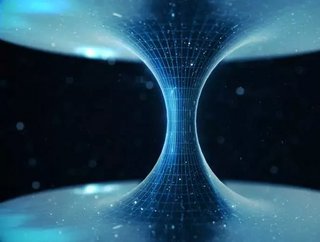Executive spotlight: Google Quantum AI Lab's John Martinis

Last week, a document posted to (and then immediately withdrawn from) NASA’s website revealed that a team of Google researchers at the tech giant’s Quantum Artificial Intelligence Lab had reached a significant milestone: demonstrating “Quantum Supremacy.”
In the race to create viable quantum computing technology, a development that is expected to have serious repercussions for finance, energy and cybersecurity, every step towards actionable breakthroughs sends shockwaves through the market.
Meet Sycamore
Quantum Supremacy is the development point at which a quantum computer is shown to be able to perform a task beyond the capabilities of even the most powerful supercomputer. A calculation that reportedly would have taken IBM’s Summit - the world’s most powerful commercially available computer - around 10,000 years to complete was allegedly cracked in under four minutes by Google’s 53-qubit Sycamore machine. For unknown reasons, the computation wasn’t made with Google’s larger, more powerful 72-qubit Bristlecone machine.
The implications of quantum computing are epoch-defining. “In a discussion of quantum computing at MIT Technology Review’s EmTech conference in Cambridge, Massachusetts this week before news of Google’s paper came out, Will Oliver, an MIT professor and quantum specialist, likened the computing milestone to the first flight of the Wright brothers at Kitty Hawk in aviation,” according to the MIT Technology Review, which goes on to explain that “unlike classical bits, which are either a 1 or a 0, qubits can be in a kind of combination of both at the same time. Thanks to other quantum phenomena… quantum computers can crunch large amounts of data in parallel that conventional machines have to work through sequentially.”
The biggest disruption - and why the finance industry is most nervous about a quantum dawn before it’s ready for one - will be in the field of encryption. The increased power stemming from quantum computers’ ability to process computations in parallel - rather than sequentially like conventional machines - is expected to render modern standards of encryption ineffective against a quantum cyber attack (single handedly the coolest three words I’ve ever strung together) potentially laying bare every aspect of the financial sector, the state secrets of world governments and the personal information of billions.
SEE ALSO:
-
Google's AI DeepMind might be able to spot acute kidney injury 48 hours before doctors spot it
-
Will quantum computing revolutionise cybersecurity? IBM thinks so
-
IBM hits quantum computing 'milestone' revealing its highest quantum volume to date
The truth and nature of this breakthrough is still hazy, however. Ongoing research into creating quantum-proof algorithms is proceeding at a breakneck pace (particularly in the cryptocurrency space) and the National Institute of Standards and Technology (NIST) has long been working on post-quantum cryptography. The implications and shape of the next major technological leap still remain unknown, and aren’t likely to affect the day to day lives of the general public for years to come.
Today, though, Gigabit takes a look at the engineer who reportedly led the team that demonstrated quantum supremacy: John M. Martinis.
John Martinis

An alumnus of the University of California, Berkeley, Martinis has been involved in the developing frontier of quantum computing, working for the NIST, where he was involved in understanding the basic physics of the Coulomb Blockade, and worked to use this phenomenon to make a new fundamental electrical standard based on counting electrons. Since 2002, his research effort has focused on building a quantum computer using Josephson junctions - the subject of his PhD.
“He has pioneered many important demonstrations, including entangled states, Bell state violation, Fock and arbitrary photon generation, photon NOON states, and the quantum von Neumannn and RezQu architecture. In 2010, he was awarded with collaborator Andrew Cleland the “Science breakthrough of the year” for the first demonstration of the quantum ground state in a mechanical oscillator system. In 2014 he was awarded the London Prize for low-temperature physics research on superconducting quantum bits. Dr. Martinis was a NIST Fellow, and is a Fellow of the American Physical Society. At the University of California, Santa Barbara he currently holds the Wooster Chair in experimental physics. In 2014 he was awarded the London Prize for his pioneering work on superconducting qubits. In 2014, Dr. Martinis joined Google to head up their quantum-hardware effort. The aim of this research is to build the first useful quantum computer,” explains his Google bio.
It would seem that, after this week, Martinis has - along with a cohort of some of the best engineers on the planet - potentially cracked that goal.






